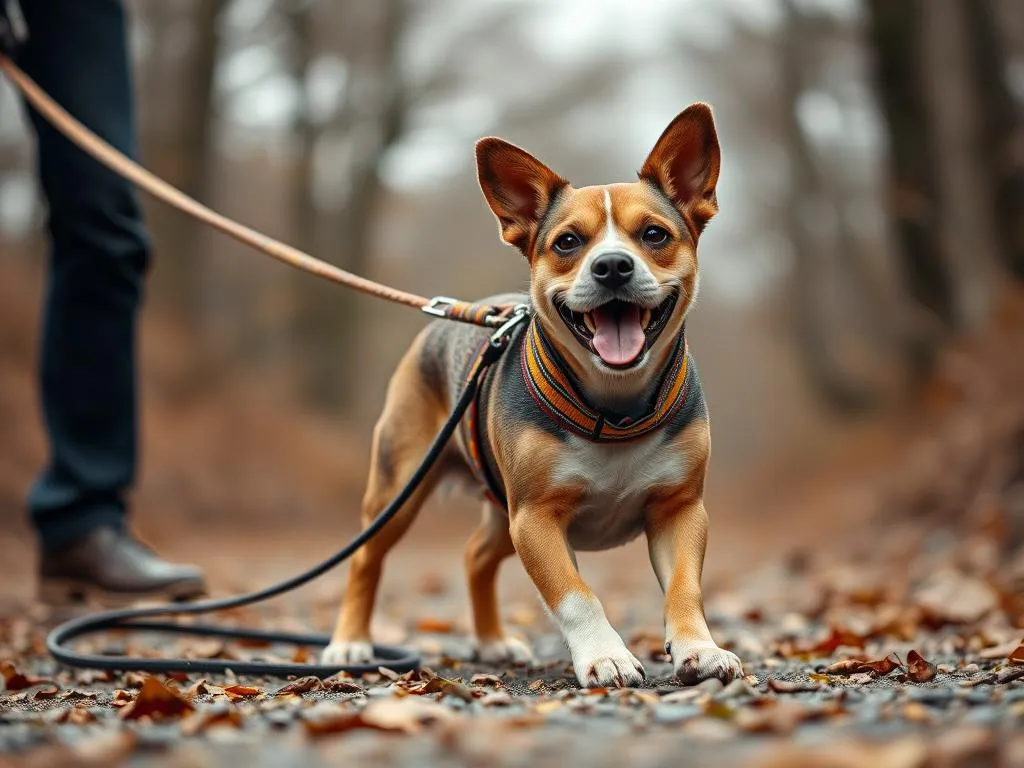
Walking a dog that pulls can feel like an uphill battle. Whether it’s the irresistible allure of a squirrel, the excitement of meeting another dog, or simply the joy of exploring the great outdoors, many dogs have a natural instinct to pull on their leashes. This can make walks frustrating and, at times, unsafe. But fear not! With the right equipment, particularly the best leash for dogs that pull, you can turn those chaotic walks into enjoyable experiences for both you and your furry friend.
Understanding Dog Pulling Behavior
Causes of Pulling
Before diving into leash options, it’s essential to understand why dogs pull in the first place.
- Natural Instincts: Dogs are explorers by nature. Their instincts drive them to chase scents, and they often get excited about new sights and sounds. This instinct can manifest as pulling on the leash.
- Lack of Training: If a dog hasn’t been trained to walk nicely on a leash, they may not understand that pulling is undesirable behavior. Reinforcing the pulling behavior through inconsistent responses can further encourage this habit.
- Environmental Factors: Distractions abound in the environment. Other animals, people, and even interesting smells can divert a dog’s attention, prompting them to pull towards the source of their interest.
Risks Associated with Pulling
While pulling might seem harmless, it can lead to several risks:
- Physical Harm to the Dog: Pulling can cause injuries, especially if a dog is wearing a traditional collar. The strain on their neck can lead to choking, collar injuries, or neck strain.
- Safety Concerns: A dog that pulls can be harder to control, which poses a risk to the owner and others. A sudden pull can lead to falls or accidents, creating a dangerous situation.
- Negative Experiences: If a dog consistently pulls during walks, they may associate leash time with stress and discomfort, leading to anxiety or behavior issues.
Types of Leashes for Dogs That Pull
Choosing the right leash is crucial in managing and training your dog to walk without pulling. Here are three primary types of leashes to consider:
Standard Leashes
Standard leashes are typically made of nylon or leather and come in various lengths, usually between 4 and 6 feet.
- Pros: They offer good control and are straightforward to use. They’re also versatile and can be used with different types of collars and harnesses.
- Cons: For dogs that pull, a standard leash may not provide enough control and can lead to strain on the owner’s arm.
No-Pull Leashes
No-pull leashes, including front-clip harnesses, are specifically designed to reduce pulling. They often feature a clip on the front of the harness that redirects the dog’s attention back to the owner.
- Advantages: They help prevent strain on the dog’s neck and allow for better control. These leashes can also be effective training tools that encourage dogs to walk beside their owners.
Retractable Leashes
Retractable leashes offer a spring-loaded mechanism that allows dogs to roam within a set distance.
- Discussion on Suitability: While they provide freedom for the dog, they can be less ideal for dogs that pull. When a dog pulls, the leash can become taut, potentially leading to accidents or injury if not handled correctly.
Features to Look for in the Best Leash
When searching for the best leash for dogs that pull, consider these key features:
Material and Durability
Strong materials are vital for a leash that will endure the force of a pulling dog. Look for options made from nylon or heavy-duty leather that can withstand wear and tear. Weather-resistant materials are also recommended to ensure longevity.
Length and Width
The ideal leash length varies depending on the dog’s size and behavior. For a dog that pulls, a shorter leash (4-5 feet) can provide better control. The width should also be appropriate for the dog’s size; a wider leash can offer added strength for larger breeds.
Comfort and Grip
Walking should be comfortable for both you and your dog. Look for leashes with ergonomic handles that reduce strain on the owner’s hand, especially during long walks. Padded grips can enhance comfort, making your walks more enjoyable.
Safety Features
Safety should always be a priority. Consider leashes with reflective elements for visibility during evening walks. Quick-release mechanisms can also be beneficial in emergencies, allowing you to detach your dog quickly if needed.
Top Recommendations for Leashes
Here are some top picks for leashes that can help manage dogs that pull:
Best Overall Leash
Product Name: PetSafe Easy Walk Dog Harness
Description: This harness features a front-clip design that discourages pulling by redirecting your dog’s attention.
Pros: Effective at reducing pulling behavior, comfortable for dogs, and easy to adjust.
Cons: Some dogs may need time to adjust to wearing a harness.
Best No-Pull Leash
Product Name: Blue-9 Pet Products Balance Harness
Description: This harness is designed to prevent pulling and provides excellent control with its unique structure.
Pros: Great training tool, distributes pressure evenly, and comes in various sizes.
Cons: Slightly more expensive than standard harnesses.
Best Budget Option
Product Name: PetFusion Leash
Description: A simple yet effective leash made from durable materials, perfect for everyday use.
Pros: Affordable, durable, and straightforward.
Cons: Lacks the additional features of more specialized leashes.
Best Premium Leash
Product Name: Ruffwear Roamer Dog Leash
Description: This hands-free leash combines durability with versatility, allowing for various walking styles.
Pros: Durable, comfortable to wear, and ideal for active lifestyles.
Cons: Higher price point may not fit every budget.
Training Tips to Reduce Pulling
While the right leash can help, training is equally important in managing pulling behavior. Here are some effective training tips:
Basic Obedience Training
Teaching your dog basic commands like “sit,” “stay,” and “heel” is essential. These commands reinforce good behavior and provide structure during walks. Regular practice can lead to significant improvements in your dog’s walking habits.
Using Positive Reinforcement
Rewarding desired behaviors can be a powerful motivator for your dog. Use treats, praise, or toys to encourage your dog to stay by your side. For example, when your dog walks without pulling, offer a treat or verbal praise to reinforce this positive behavior.
Consistency and Patience
Training takes time, and consistency is key. Set realistic expectations for progress and practice regularly to help your dog learn. Be patient and understanding, as every dog learns at their own pace.
Conclusion
Choosing the best leash for dogs that pull is a crucial step in transforming your walks from a struggle into a pleasant experience. By understanding the causes of pulling, selecting the right leash, and implementing effective training techniques, you can build a better walking routine with your dog. Don’t hesitate to explore different options and training methods to find what works best for you and your furry friend.
FAQs
How can a leash help stop dogs from pulling?
A well-designed leash, especially no-pull options, can redirect your dog’s attention and help maintain better control during walks, making it easier to manage pulling behavior.
Are harnesses better than collars for pulling dogs?
Yes, harnesses, particularly front-clip designs, are generally safer and more effective for dogs that pull. They distribute pressure more evenly and reduce the risk of injury.
What should I do if my dog continues to pull despite using a no-pull leash?
If your dog continues to pull with a no-pull leash, it may be necessary to revisit training techniques. Consistent training, positive reinforcement, and perhaps seeking advice from a professional trainer can help address persistent pulling behavior.









